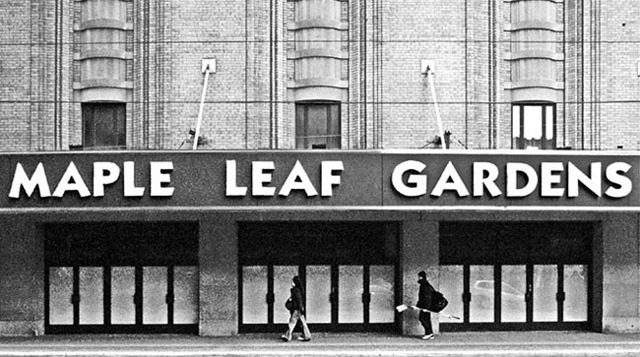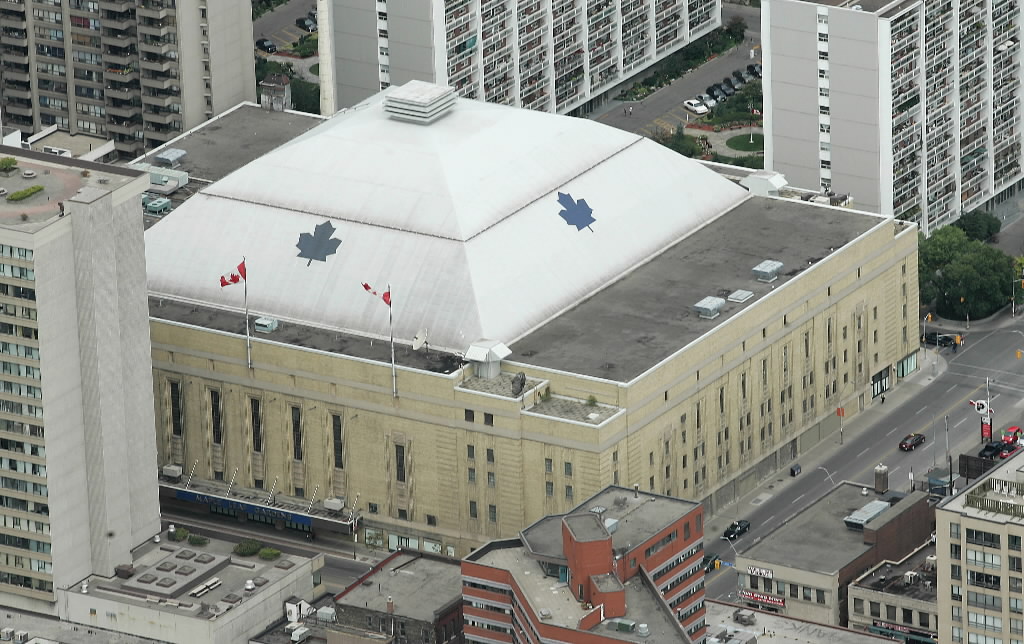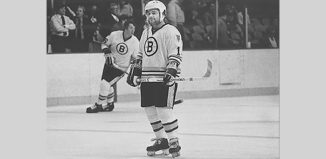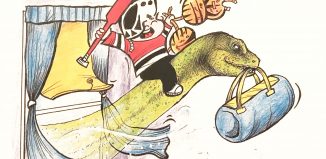Barn Blog: Maple Leaf Gardens
Name: Maple Leaf Gardens
Team: Toronto Maple Leafs
Location: Toronto, Ontario
Year Built: 1931
Capacity: 15,728
Have you ever worked on a paper or project, but eventually decided you were so sick of it you just wanted to trash it and start all over again? Well, that’s exactly how the story of Maple Leaf Gardens’ story begins. In the 1930’s, Conn Smyth, owner of the Toronto Maple Leafs, saw an increase of interest in his team. More and more fans were coming in to watch the games and see the team. During the time (the 1930’s) their current stadium, old Arena Gardens, could only hold a total of 8,000 fans. Smyth knew he would need a larger stadium. With his many connections, Smyth arranged for the purchase of land and the building of a new arena, Maple Leaf Gardens. According to the Maple Leaf’s website, the stadium went up in only five months and was referred to by many as “a miracle in engineering.
All Smyth needed now was workers. Heritagetoronto.org tells the story of what happened next, “One morning, he sent a message to staff at the old venue offering all of them work at his new facility, the catch? The jobs were only available until Smythe left for lunch at 12:15 p.m. The staff raced up to the construction site on Carlton Street, leaving no one behind to watch the furnace that powered the building’s ice-making equipment. When the flames died out, the pipes burst and destroyed the plant.” Smyth accomplished his goal of never having to play at old Arena Gardens again and was ready to get going with his brand new Barn.
Maple Leaf Gardens was constructed as a simple building with just a post-and-beam rectangular concrete frame and a slab floor. It was lined with yellow concrete bricks and included a blue maple leaf insignia on the roof. It was also the largest arena in the country at the time. The building’s simple architecture made for a strong foundation that lasted through its years of use from 1931-1999. It would later become known as Canada’s “cathedral of hockey.’ Since 2006 this hockey barn has also been considered a national historic landmark for Canada.
Not only did Maple Leaf Gardens have a fascinating opening, but it accumulated even more stories and memories throughout its years. As the building opened, fans already knew this building would bring some great memories as it housed one of the original six teams of the NHL with turbulent personalities. According to the team’s website, the team had also been known for gags such as “hanging King Clancy by his feet out of an open hotel window.” Not only that, but they had a crafty owner determined to meet his goals and have his way.
In their first season at the new stadium, the Maple Leafs won the Stanley Cup after defeating the New York Rangers. Going into the series the teams were evenly matched. The Rangers record was 28-17-8 while the Maple Leafs stood at 28-18-7. In the first two games the Leafs overpowered the Rangers and beat them with scores of 6-4 and 6-2. Then on April 9th the Maple Leafs won their third stright game with a score of 6-4 and took home the Stanley Cup. In the following years Toronto would be a powerhouse and made it to the finals an outstanding seven times in a nine year period between 1932-1940.
During the 1932-1933 season, the Maple Leafs met the Boston Bruins in the semi-finals and ended up playing one of the longest games in hockey history. The series began on March 25th. The game went to overtime, but was won by Bruin Marty Barry 14 minutes into the period. In game two the Maple Leafs got their revenge and won in another overtime game. In another overtime the Bruins won game three, but the Leafs once again tied things up as the series went into game five. The Bruins had the home ice advantage, but that wasn’t going to stop Toronto. The first three periods went scoreless, as did the next five overtimes. The game would not end until the sixth overtime when Toronto scored the only goal of the game.

(http://hockey.ballparks.com/NHL/TorontoMapleLeafs/interior.jpg)
As the game stretched on into overtime after overtime, Conn Smyth and Art Ross were ready to settle the game with a simple coin toss. However, the president of the NHL, Frank Calder, turned down this idea realizing that the players had already worked too long and too hard for the game to be settled by a flip of a coin. He decided that whichever team could endure would be the ones to move to the finals. After 165 minutes of hockey ending with a historical win, Toronto hit the locker rooms, loaded the bus and headed straight for New York where they would once again face off again the Rangers who later got their revenge against the Leafs for beating them in the finals the previous year.
Not only were a lot of great hockey games played at Maple Leaf Gardens, but there were many great beginnings to new traditions as well. Maple Leaf Gardens is where Foster Hewitt began his “Hockey Night in Canada” radio broadcasts in 1952. At the time it was uncommon for hockey games to be broadcast over the radio. With the Maple Leafs growing popularity, it made sense to cover the games and transmit them over the airways so that the people who could not attend the game could still know what was going on. According to the Maple Leaf’s website, the “Hockey Night in Canada” broadcasts became a “Saturday-night tradition for Canadians coast-to-coast [and] because of Foster’s description of Leaf Games and his build up of their star players, the Leafs became ‘Canada’s team.’” Through these broadcasts Hewitt also coined the well-known phrase, “He shoots, he scores.”
These are just some of the few great moments to happen at Maple Leaf Gardens. The list of memories and great stories go on, but today new memories are being made in the Leafs current arena, the Air Canada Centre. Maple Leaf Gardens still stands as a national historic monument for fans and tourists to visit. Maple Leaf Gardens may be just another arena for some, but to others like the Maple Leafs and their fans, it’s one of the greatest hockey barns that housed the Maple Leafs as they progressed and showed the world what their hockey and their team were all about.















